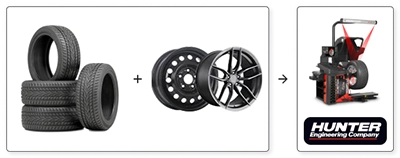Load range & ply rating

Load load capacity
The load index and the number of plies on the tire's sidewall determine the maximum load the tire can support with the pressure recommended by the manufacturer.
The load indices of tires used on passenger cars and light trucks range from 70 to 130.
We present you with a list of load indices and a reference table for the number of plies in tires. A load index is a number that indicates the maximum weight your vehicle's tires can support, assuming they have the proper pressure. The higher the tire's load index, the higher its load capacity. Typically, passenger, SUV and light truck tires have a load index ranging from 70 to 130, while you can find a load index ranging from 0 up to 276.
Where is the load index located?
You will find the load index on the sidewall of your tire, more precisely on the right side of the diameter measurement, or more simply, it is the last number of that series on the tire, so, for example, the number 94 in the code 255/40R17 94W.
Can I increase or decrease my load capacity?
Are you wondering if it is possible to change the load capacity of your tires? In short, you can increase your load index as long as you check the vehicle's instruction manual to make sure that the load is appropriate for your vehicle. On the contrary, you cannot choose a lower load capacity than the one listed on your original tires. The load capacity has been established according to the weight of your vehicle, so buying tires with a lower maximum weight will cause inconvenience and may even compromise your safety.
Checking before buying
When purchasing a tire, it is essential to consider the speed and load ratings to ensure that the tire you choose is safe for your car.
List of load ratings
The tire's load index is a number that determines the maximum weight that the tire can carry.


